Soil Horizons
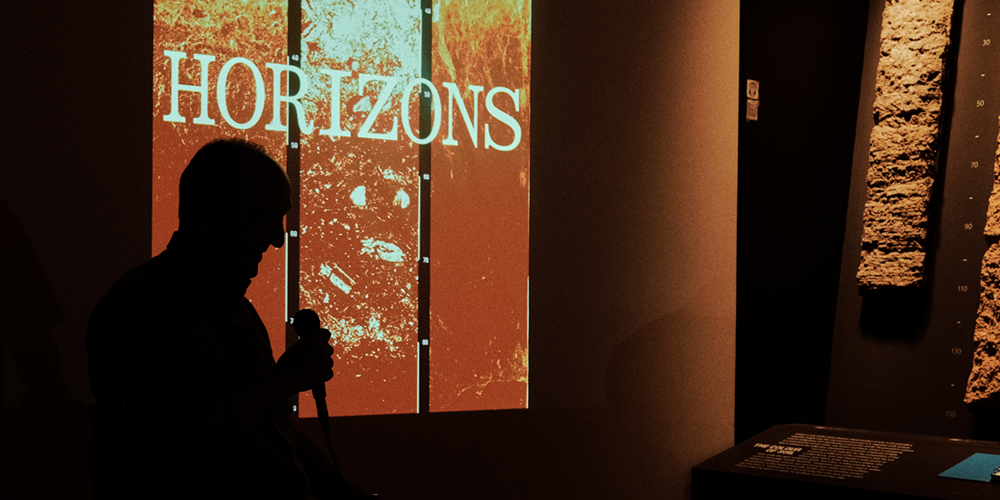
This event took place on 26th of June 2024, in ISRIC, Wageningen. An event initiated by Sigrid Schmeisser with ISRIC staff members Stephan Mantel and Mara Grandia.
Seemingly mundane just below our feet, a world of soil unfolds. From gardens to agriculture, from wetlands to peatlands, from sealed surfaces all the way to the landfill covered with soil, we are constantly entangled with this vital agent and yet ever more separated from it. Drawing nearer to soil means digging deeper and exposing more than we can see. Profiles, extracted from 'Soil horizons', expose and narrate the history of these invisible territories. They are records of distant and recent past albeit never static. For soil is always in movement, an ongoing process of cycling and recycling nutrients, it responds and is shaped and built through polymorphic assemblies of geological, organic and life agents. Over the last decades, it has become ever more evident that due to mismanagement and the effects of global warming, we will lose most vital topsoil within the next 60 years. Across territories, both human interventions and climatic events lead towards ecosystem loss and soil exhaustion, with rivers washing valuable soil into the ocean, the loss of wetlands and the impacts of agriculture. Under the theme of 'Soil Horizons', Miguel Teodoro, Sigrid Schmeisser as well as Kate Foster & pantea are responding to three different soil classifications present within the World Soil Museum.
Miguel Teodoro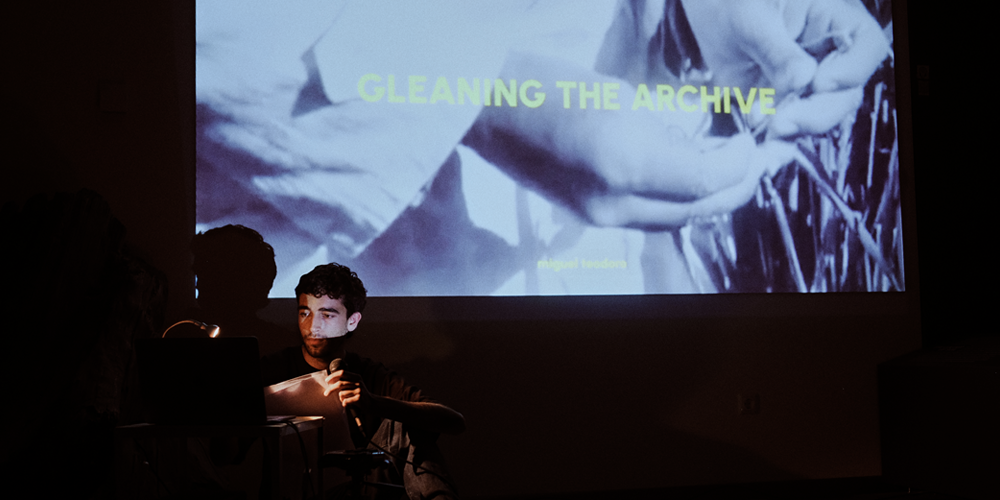
Chemical Affinities traces the impacts of ammonia fertilisers in the Alentejo region of southern Portugal, examining material and territorial manifestations such as cultivation patterns, artefacts and infrastructure. Aiming to problematise the role of chemicals in accelerating and managing growth, the project investigates the complex relationships between the entangled histories of soil fertility, energy, chemical industries and image-making technologies.
Alongside the film 'Chemical Affinities', Miguel gave a lecture performance 'Gleaning the Archive'. This described the methodology of how to look at visual and material manifestations of soil fertilisation through a critical design lens. Considering the archives as fields of knowledge that require agitation and reassembly, gleaning becomes an inquiry tool to unpack the politics of fertilisers. The lecture performance grappled with a constellation of visual artefacts from the first half of the 20th century (in particular during the fascist dictatorial period in Portugal 1933-1974). This is a critical analysis on image production around chemical fertilisers, and its relation to the technoscientific transformations of agricultural land. Agriculture-related imagery from the 20th century onwards became material evidence of the influence of chemical industries on land, bodies, and ecosystems.
 Link to film Chemical Affinities:https://miguelteodoro.com/
Link to film Chemical Affinities:https://miguelteodoro.com/Sigrid Schmeisser
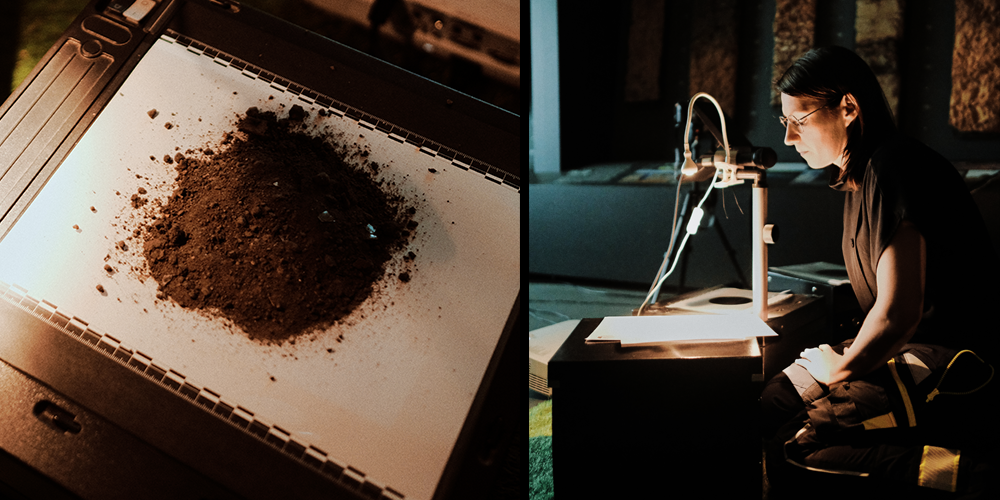
Sigrid Schmeisser showed her current research chapter focussed on landfills as post-natural landscapes. The landfill as the 'geospatial other' is deconstructed in her work, which illuminates its legacy within contemporary waste management. She introduced her current research chapter (supported by Stimulering Fonds & Cultuur Fonds) with a focus on the Netherlands, where she seeks to map landfills through cartography, yet also through their materiality, namely the soil layer applied above these sites. It is this very last layer that allows the landfills to seemingly merge with its surroundings, and therefore enables what ecologists call, the 'shifting baseline syndrome', the idea that citizens may adapt to these post-natural landscapes over time and generations. Schmeisser is in the process of working with the ISRIC specifically on these types of soil (technosol and garbic technosol).
The concluding lecture performance How to hide a Mountain is an audio-visual performance composed of two narrative layers, interweaving field research, audio recordings and photography. Using a fictional parable inspired by Calvino's 'Invisible Cities' as well as spoken word elements, the first narrative layer describes a newly terraformed island and its inhabitants as they find themselves trapped within the paradigms of growth and the imposed 'geospatial other' on the periphery. A secondary essay layer walks through several landfills (land bodies) across Europe, where each selected site highlights inherent contradictions of landfilling to date and deconstructs its engineering mechanisms and language. A debate on the continued raison d'etre of the land body appears to be missing instead myths surrounding waste are collectively enacted. Due to ever more hazardous waste streams and incineration ashes, land bodies are likely here to stay. The performance concludes with the video 'The Geospatial Other'.
Sigrid Schmeisser www.centre-to-periphery.com
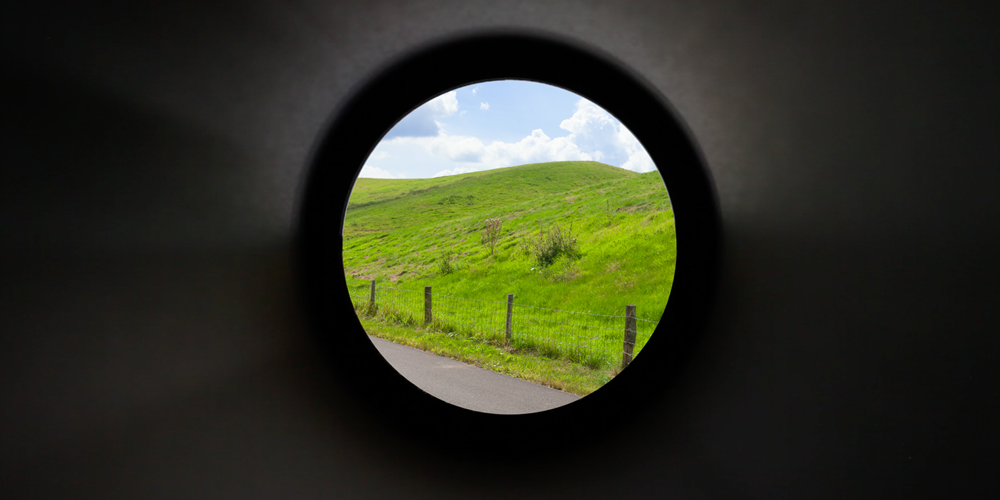
Kate Foster & pantea
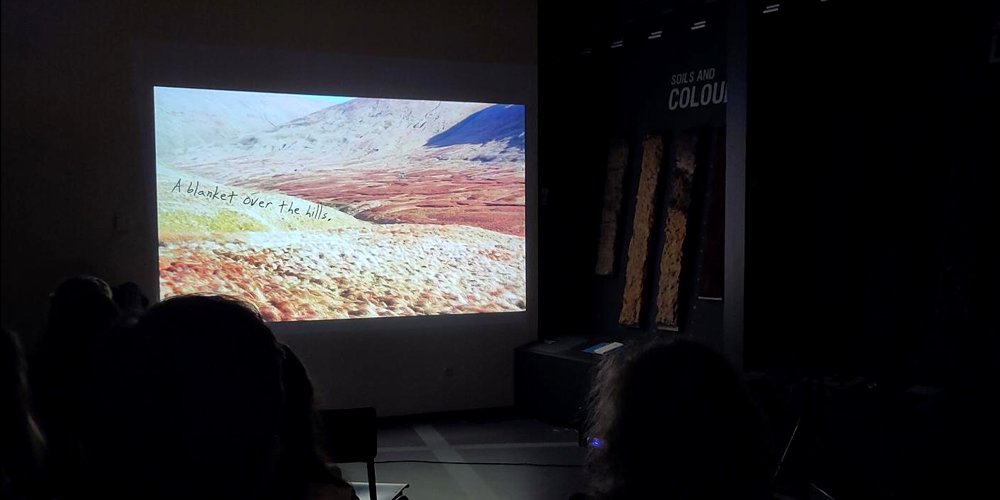
Peatlands are indeterminate places with endangered futures. Kate and pantea ask, as artists, how can we help narrate their complex heritage and ecology? They want to show the past in the present, suggest multiple meanings and perceptions, and add emotions of wonder and urgency to the rationale of peatland restoration. Their recorded zoom presentation described our individual and collaborative backstories, and plans for upcoming work on 'Peatlands' Resonance' in the World Soil Museum context.
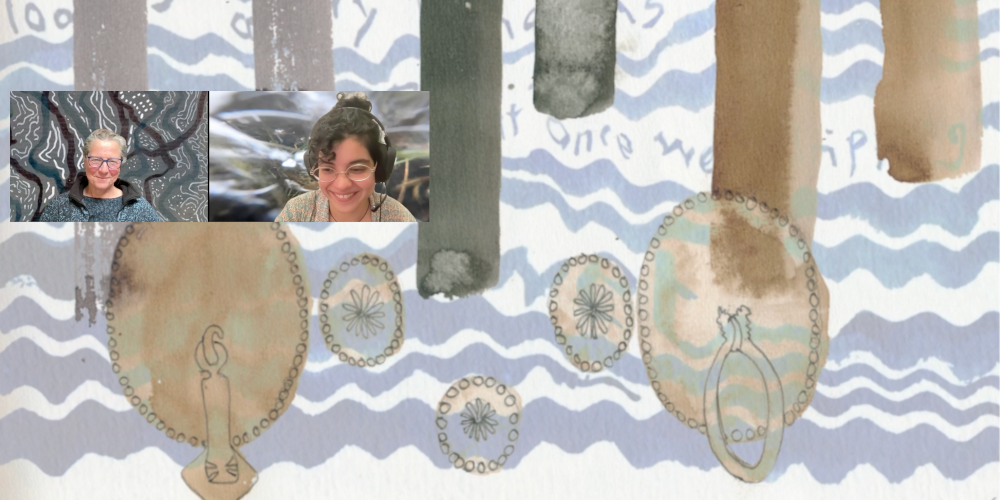
Link to the video https://vimeo.com/1038584985?share=copy
Kate Foster https://linktr.ee/katefoster
Pantea https://pantearm.github.io
Panel Discussion
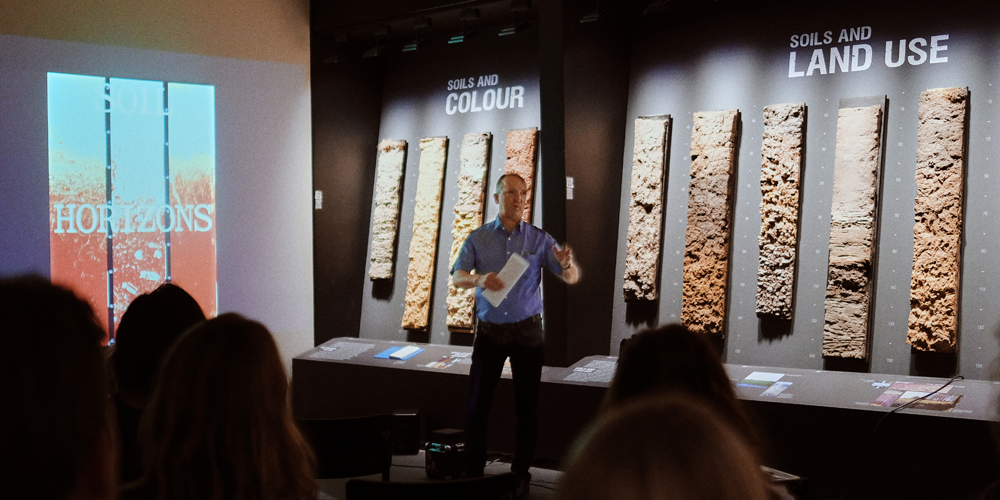
In the joint conversation with Stephan Mantel, Head of the World Soil Museum, we discussed questions such as the role of fieldwork in our projects, the popular idea of 'soil health' within soil sciences and how to bridge science and art projects respectively.
Hear the full conversation here (link pasted below to use): https://www.mixcloud.com/SigridS/soil-horizons-isric/

Kate Foster suggested that just the idea of a World Soil Museum has power, and it made her, as an artist, think about how soils are represented in this setting. When you think about all the social processes that accompany the presentation of the soil profiles, and how we relate to them - this is where arts and humanities can contribute. Kate herself works in a collaborative and cross-disciplinary way, starting with what people are enthusiastic about. In the soil museum she narrowed her enquiry down to particular specimens of peat and their human stories.
Miguel Teodoro raised the question of digital versus analogue collections, noting that his first encounter with the World Soil Museum was through its digital platform. He reflected on the role images play in both science and art within these two modes of archiving. His work very much centres on fertility and how human interaction that could be classified as 'anthropogenic' may indeed be positive - such as the traditional use of seaweed as a fertiliser in some Portuguese coastal regions. Sigrid Schmeisser reflected on the gap of research regarding soils in relation to landfills, known as technosol and garbic technosol, of which one sample (Hilversum Landfill) is a rare example present in the World Soil Museum. She also noted a conversation with Stephan on the idea of 'touch' that is typically prohibited in a scientific setting as this, yet how the presence of a small waste bottle in that garbic technosol profile seems to resonate with museum visitors. Thus, in her upcoming work with the museum the notion of touch in relation to soil samples will be a driving idea.
Stephan moved the conversation onto a future vision of soils in the perception of the artists. Kate felt this depends on amplifying awareness of the significance of land use, and activism. She mentioned an example in the news about how communities in the Egyptian delta experience the vital role trees play in keeping cities cool-when high temperatures rise year on year. Thus community pressure is growing to prevent illegal tree felling. Sigrid refers to an upcoming research chapter in the field built on the idea of 'shifting baseline syndrome', in other words, the idea of adaptation to the ecosystems as ruins-in this case the landfill-over time across generations. Soil plays a crucial role, as the last layer applied on site, it seemingly disguises the sites as 'natural' and thereby fosters acceptance. She intends to 'work with people from different generations to talk about this complex and contradictory subject matter', and their individual relationship with these post-natural landscapes. Miguel mentioned how syntropic and regenerative farms show very promising results, offering alternative soil practices compared to industrial, chemical-dependent farming methods. He acknowledged the challenges of these regenerative food production practices but underlined the importance of considering their social, cultural, and ecological value. 'How might traditional knowledge merge with scientific data' he wondered.
All artists mentioned the importance of fieldwork as they near scientific methods and use devices in different ways. The idea of the Canadian scholar Astrida Neimanis of fieldwork as 'feel(d)work' was cited, as a means of drawing nearer to the sites as well. Kate noted that scientists' can sense their knowledge is not being widely understood, and this may be a reason for the arts and science to come together. 'It can't be just science, and it can't just be science and art, it is a commitment to a concern, a commitment that arises through a practice of engagement'.
'Tasting the soil'
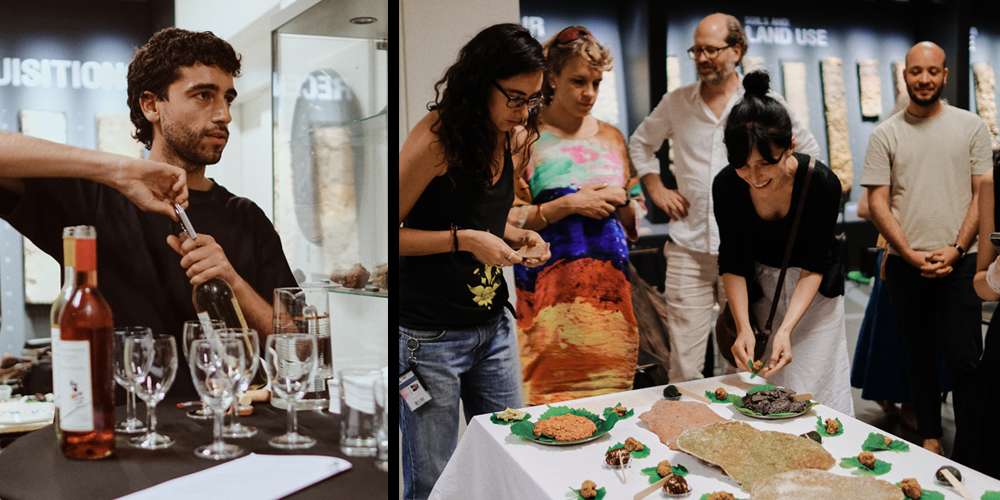
To close the event, chef and designer Shuang Xu in collaboration with Miguel Teodoro prepared a tasting menu in response to the event theme. On the table one could find ethically foraged ingredients gathered in the Netherlands. From wild grains turned into crackers to nitrophilous plants found in marginal ecologies transformed into a dip, the menu evoked soil-like materialities and invited guests to explore new ways of engaging with these feral species and soil ecologies.
Shuang Xu
https://shuang-xu.com/
The menu was paired with several wine varieties grown on the Braambergen Landfill, Almere, that were kindly supported by Hof van Almere organised by Sigrid Schmeisser.
Find out more here: https://www.hofvanalmere.nl/
Event photography by Leidy Gomez Montoya.
